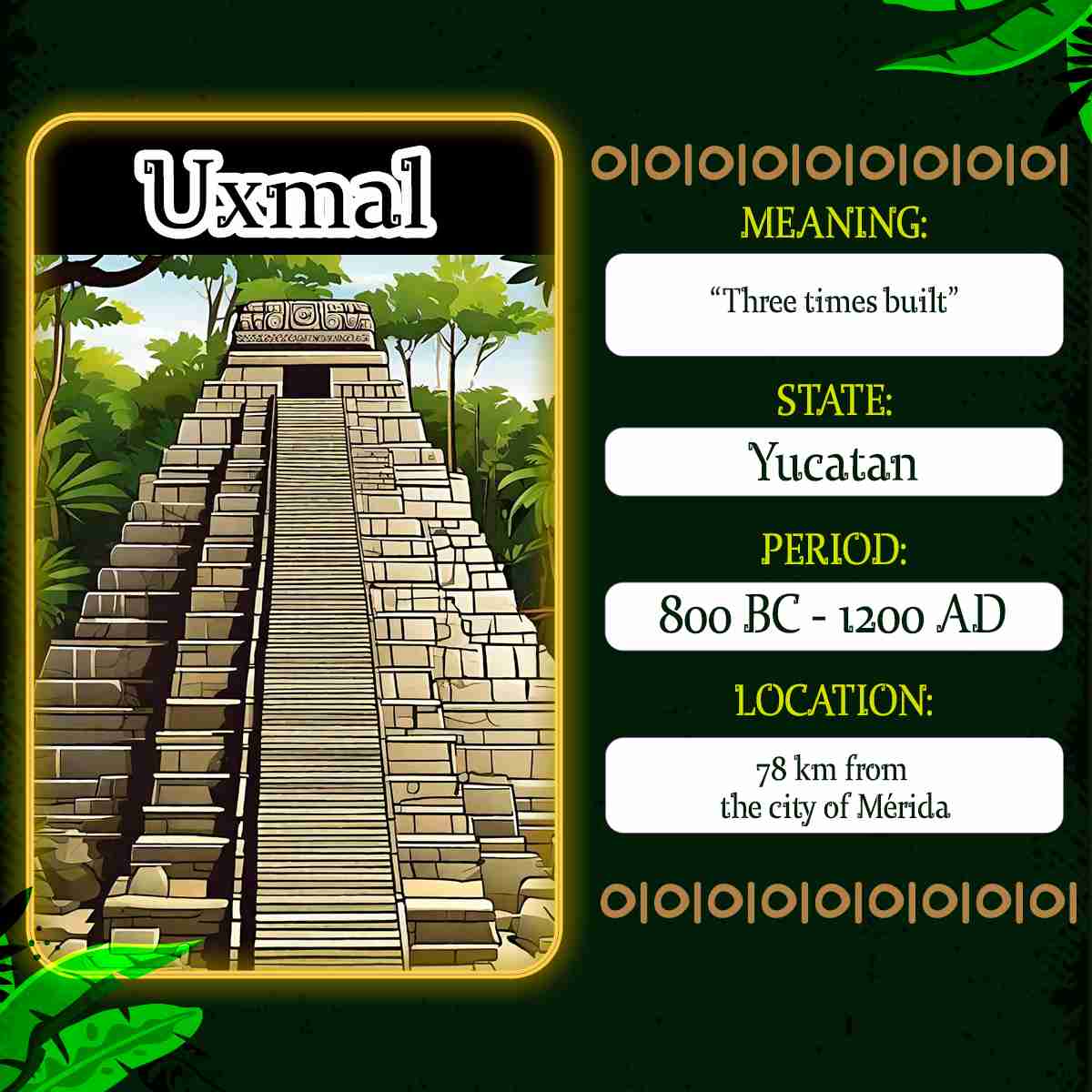This settlement is undoubtedly the most outstanding representation of architecture in the Puuc Region.
In its structures, the facades are decorated with masks of Chac, the God of Rain, as well as fretwork, panels with hieroglyphics and high crestings.
Among the most emblematic buildings are the Pyramid of the Fortune Teller, the Nuns' Quadrangle and the House of Pigeons.
Its main chronological location covers the Late Classic, approximately between 600 and 900 AD.
The population of the site began around 500 BC, and by the 7th century, it already had 30,000 inhabitants.
On the hill that serves as the base of the pyramid, large aligned and polished rocks were placed, as well as fine stone bricks joined with mortar. This allowed the construction of goldwork walls, monumental temples with rounded contours, crests similar to palm leaves, and higher and wider vaulted roofs.
Large artificial esplanades, arranged one above the other or connected to each other, were the canvas for erecting impressive monuments protected by a 1.70 meter high wall. Among these monuments are the Governor's Palace, the Nuns' Quadrangle, Los Pájaros, El Cementerio, El Palomar, the Temple of the Fortune Teller, the South Temple and the House of the Old Lady.
The name "The Thrice Built" can also be translated as "Where the harvest is plentiful."
The religious ideology of leadership and obedience led the majority of the population to fervently dedicate themselves to agriculture in exceptionally fertile soil. This resulted in the abundance of agricultural products stored in sacred, noble and communal granaries.
In addition, the population transported these products, along with fine clay vessels, palm and cotton fabrics, basketry, amate, jewelry and other precious goods, to exchange with near and far regions.
Did you know…?
All palace-type structures have a chultún (water cistern).

